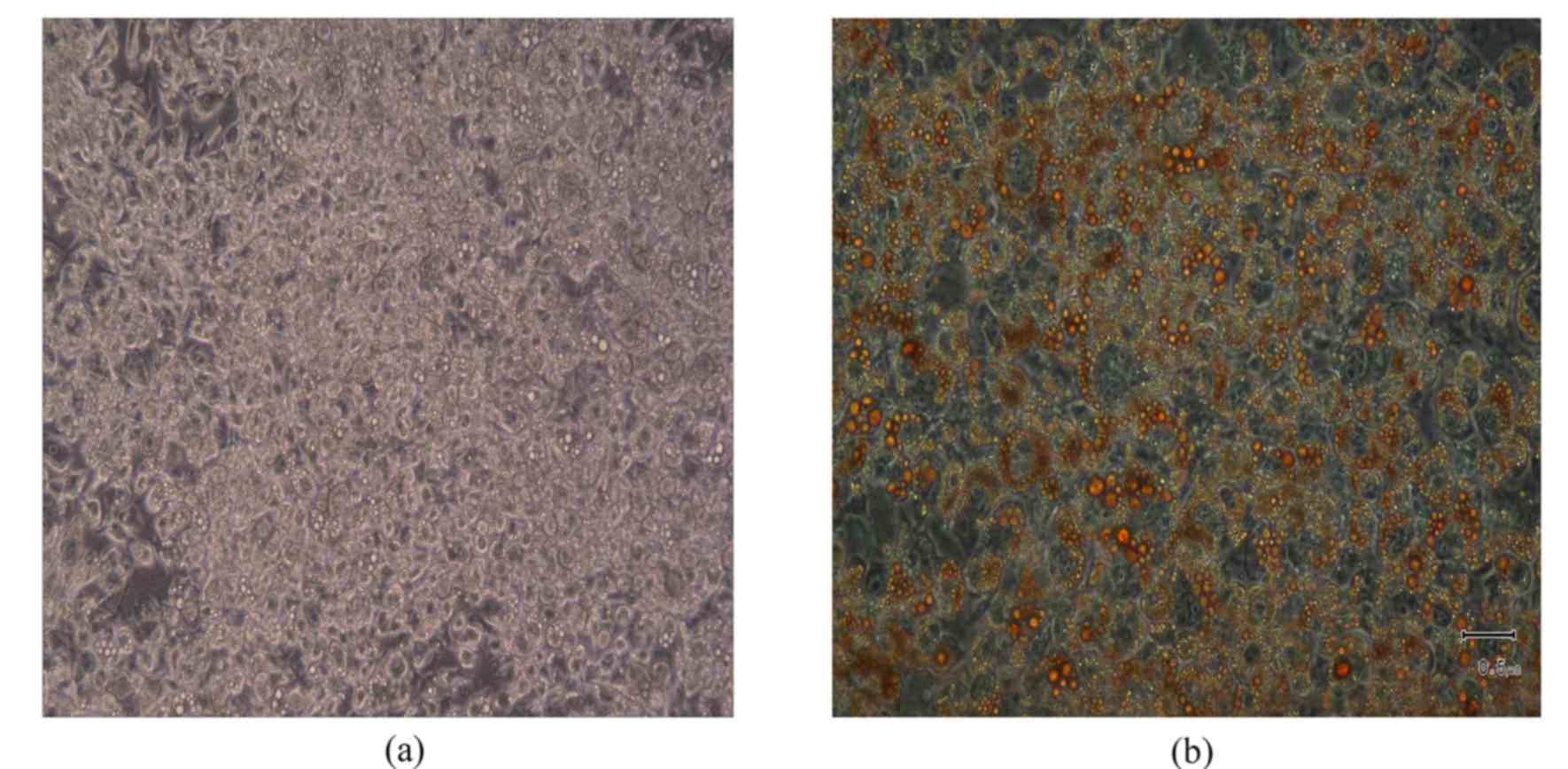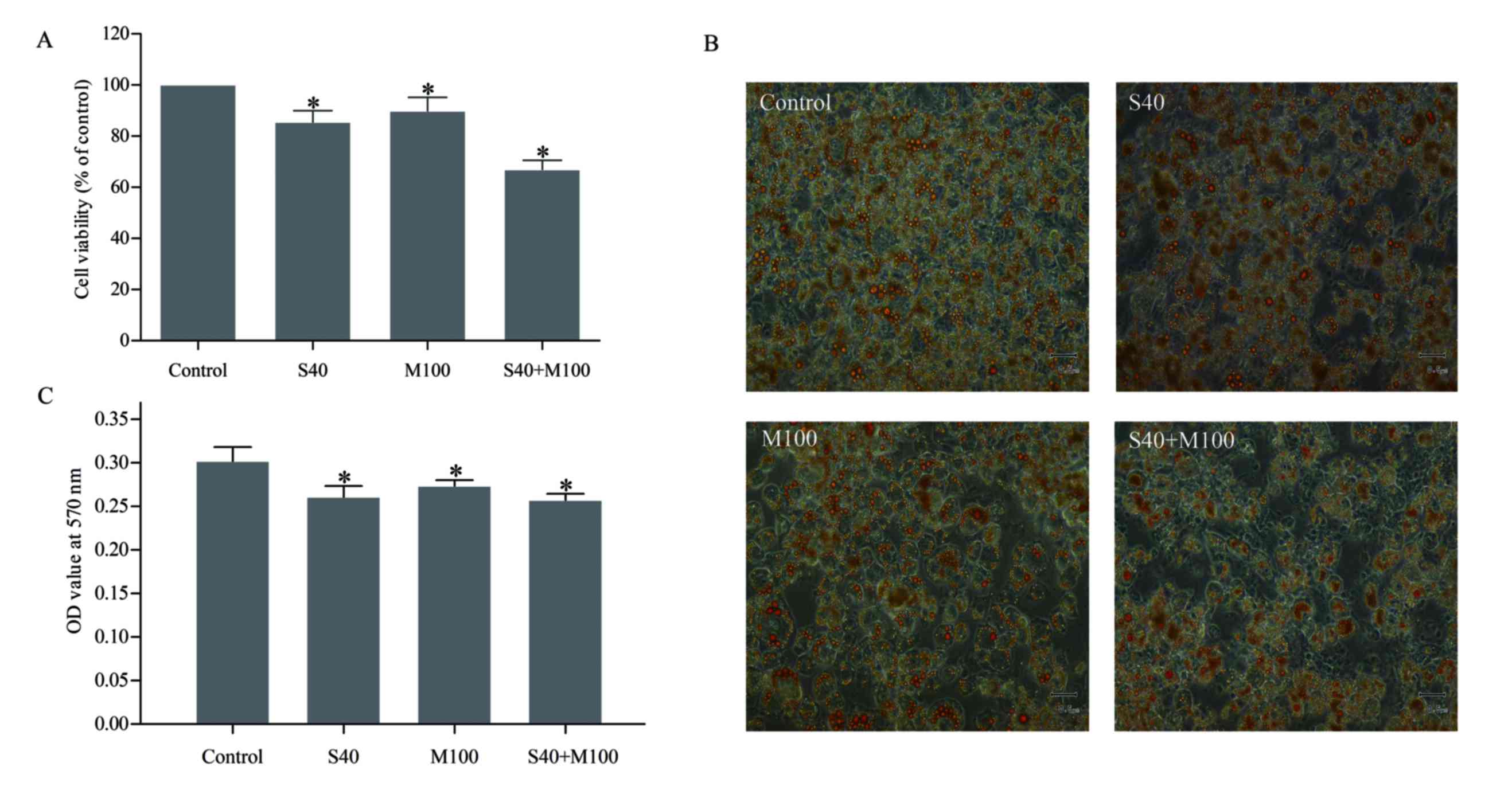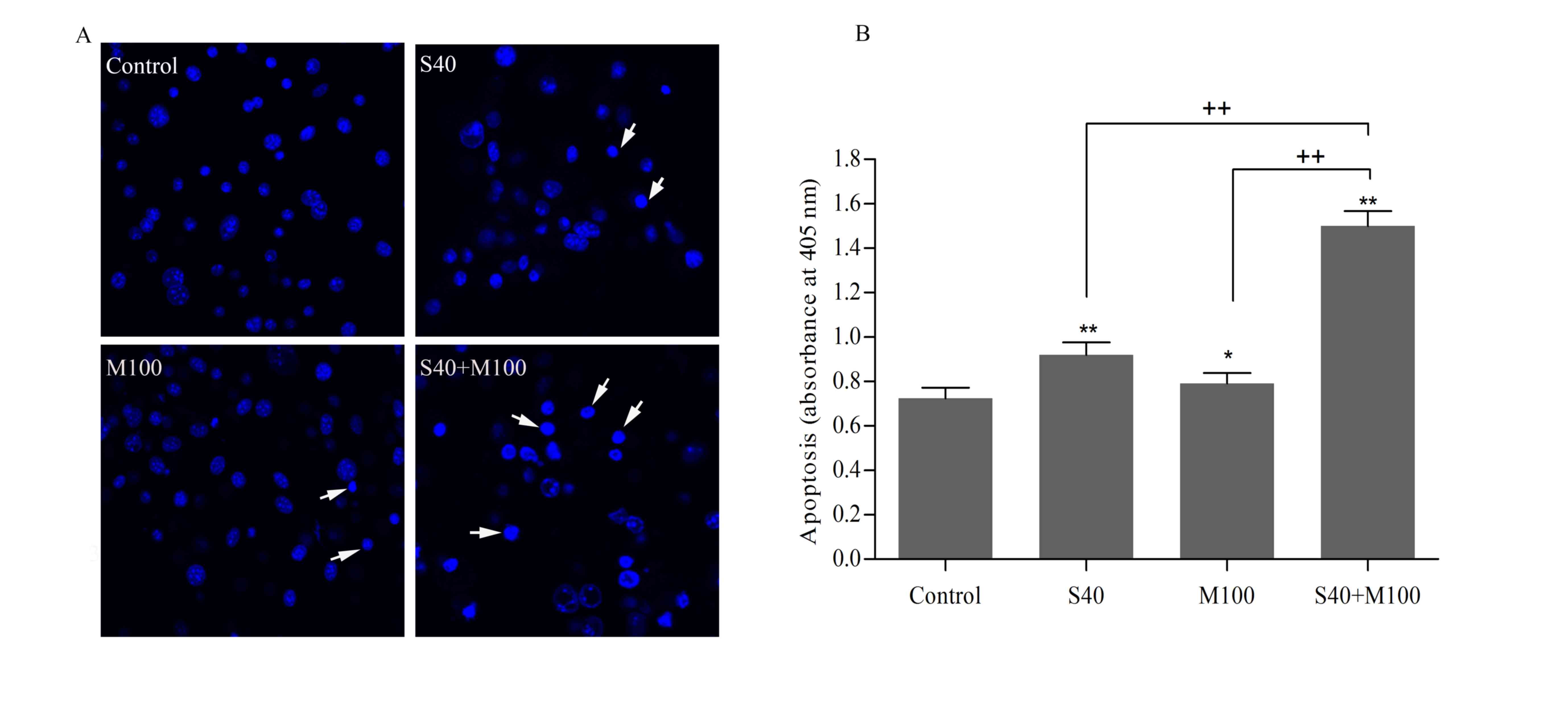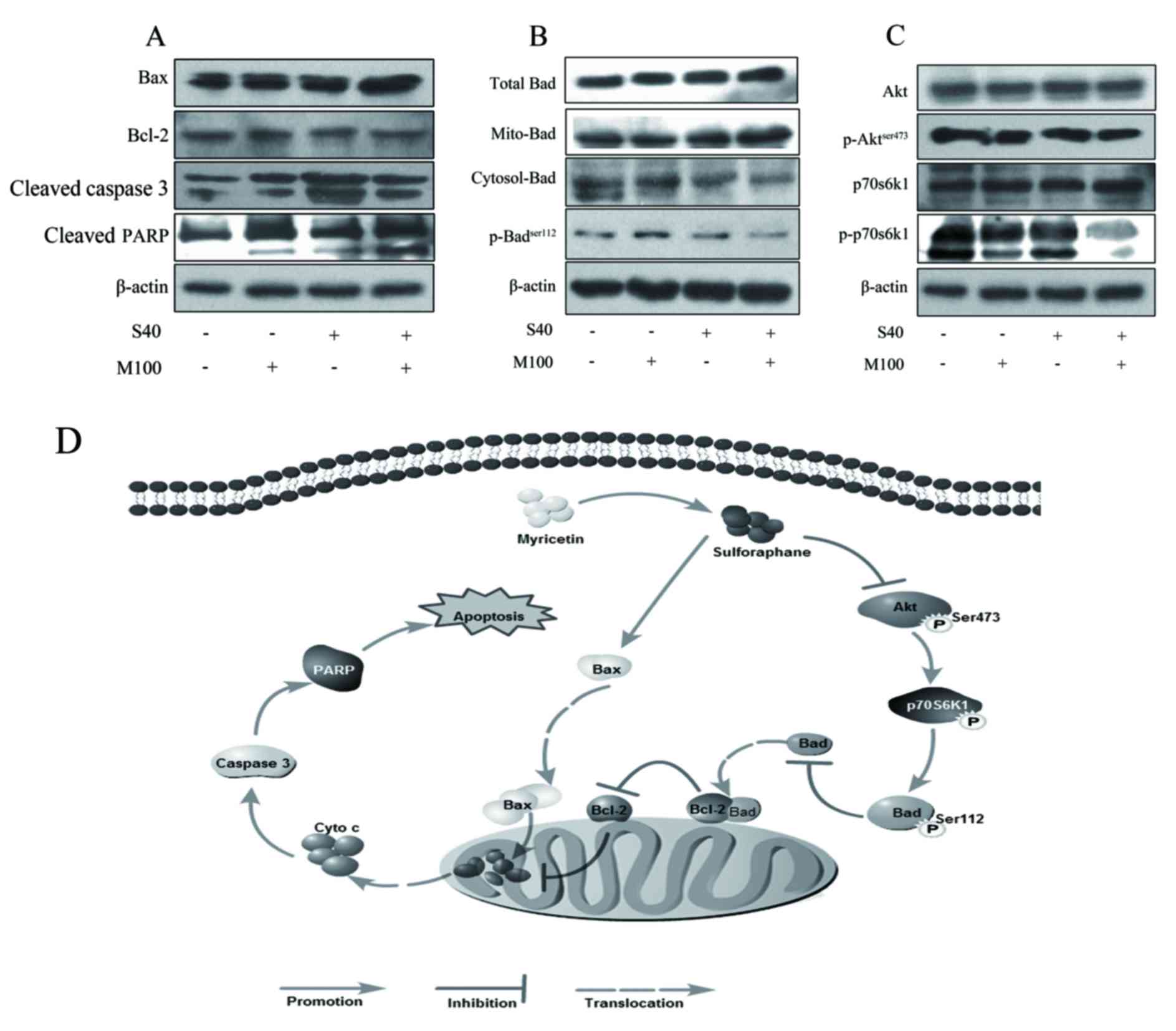|
1
|
World Health Organization, . Fact sheet no
311. 2015, http://www.who.int/mediacentre/factsheets/fs311/en/print.htmlDec.
4–2015
|
|
2
|
Jo J, Gavrilova O, Pack S, Jou W, Mullen
S, Sumner AE, Cushman SW and Periwal V: Hypertrophy and/or
Hyperplasia: Dynamics of adipose tissue growth. PLoS Comput Biol.
5:e10003242009. View Article : Google Scholar : PubMed/NCBI
|
|
3
|
Prins JB, Walker NI, Winterford CM and
Cameron DP: Human adipocyte apoptosis occurs in malignancy. Biochem
Biophys Res Commun. 205:625–630. 1994. View Article : Google Scholar : PubMed/NCBI
|
|
4
|
Prins JB, Walker NI, Winterford CM and
Cameron DP: Apoptosis of human adipocytes in vitro. Biochem Biophys
Res Commun. 201:500–507. 1994. View Article : Google Scholar : PubMed/NCBI
|
|
5
|
Lee YJ and Lee SH: Sulforaphane induces
antioxidative and antiproliferative responses by generating
reactive oxygen species in human bronchial epithelial BEAS-2B
cells. J Korean Med Sci. 26:1474–1482. 2011. View Article : Google Scholar : PubMed/NCBI
|
|
6
|
Juengel E, Maxeiner S, Rutz J, Justin S,
Roos F, Khoder W, Tsaur I, Nelson K, Bechstein WO, Haferkamp A and
Blaheta RA: Sulforaphane inhibits proliferation and invasive
activity of everolimus-resistant kidney cancer cells in vitro.
Oncotarget. 7:85208–85219. 2016.PubMed/NCBI
|
|
7
|
Shehatou GS and Suddek GM: Sulforaphane
attenuates the development of atherosclerosis and improves
endothelial dysfunction in hypercholesterolemic rabbits. Exp Biol
Med (Maywood). 241:426–436. 2016. View Article : Google Scholar : PubMed/NCBI
|
|
8
|
Li Y, Zhang T, Korkaya H, Liu S, Lee HF,
Newman B, Yu Y, Clouthier SG, Schwartz SJ, Wicha MS and Sun D:
Sulforaphane, a dietary component of broccoli/broccoli sprouts,
inhibits breast cancer stem cells. Clin Cancer Res. 16:2580–2590.
2010. View Article : Google Scholar : PubMed/NCBI
|
|
9
|
Sarkar R, Mukherjee S, Biswas J and Roy M:
Sulphoraphane, a naturally occurring isothiocyanate induces
apoptosis in breast cancer cells by targeting heat shock proteins.
Biochem Biophys Res Commun. 427:80–85. 2012. View Article : Google Scholar : PubMed/NCBI
|
|
10
|
Choi KM, Lee YS, Kim W, Kim SJ, Shin KO,
Yu JY, Lee MK, Lee YM, Hong JT, Yun YP and Yoo HS: Sulforaphane
attenuates obesity by inhibiting adipogenesis and activating the
AMPK pathway in obese mice. J Nutr Biochem. 25:201–207. 2014.
View Article : Google Scholar : PubMed/NCBI
|
|
11
|
Lee JH, Moon MH, Jeong JK, Park YG, Lee
YJ, Seol JW and Park SY: Sulforaphane induced adipolysis via
hormone sensitive lipase activation, regulated by AMPK signaling
pathway. Biochem Biophys Res Commun. 426:492–497. 2012. View Article : Google Scholar : PubMed/NCBI
|
|
12
|
Choi KM, Lee YS, Sin DM, Lee S, Lee MK,
Lee YM, Hong JT, Yun YP and Yoo HS: Sulforaphane inhibits mitotic
clonal expansion during adipogenesis through cell cycle arrest.
Obesity (Silver Spring). 20:1365–1371. 2012. View Article : Google Scholar : PubMed/NCBI
|
|
13
|
Yao A, Shen Y, Wang A, Chen S, Zhang H,
Chen F, Chen Z, Wei H, Zou Z, Shan Y and Zhang X: Sulforaphane
induces apoptosis in adipocytes via Akt/p70s6k1/Bad inhibition and
ERK activation. Biochem Biophys Res Commun. 465:696–701. 2015.
View Article : Google Scholar : PubMed/NCBI
|
|
14
|
Ong KC and Khoo HE: Biological effects of
myricetin. Gen Pharmacol. 29:121–126. 1997. View Article : Google Scholar : PubMed/NCBI
|
|
15
|
Ross JA and Kasum CM: Dietary flavonoids:
Bioavailability, metabolic effects, and safety. Annu Rev Nutr.
22:19–34. 2002. View Article : Google Scholar : PubMed/NCBI
|
|
16
|
Weng CJ and Yen GC: Flavonoids, a
ubiquitous dietary phenolic subclass, exert extensive in vitro
anti-invasive and in vivo anti-metastatic activities. Cancer
Metastasis Rev. 31:323–351. 2012. View Article : Google Scholar : PubMed/NCBI
|
|
17
|
Sun F, Zheng XY, Ye J, Wu TT, Wang J and
Chen W: Potential anticancer activity of myricetin in human T24
bladder cancer cells both in vitro and in vivo. Nutr Cancer.
64:599–606. 2012. View Article : Google Scholar : PubMed/NCBI
|
|
18
|
Phillips PA, Sangwan V, Borja-Cacho D,
Dudeja V, Vickers SM and Saluja AK: Myricetin induces pancreatic
cancer cell death via the induction of apoptosis and inhibition of
the phosphatidylinositol 3-kinase (PI3K) signaling pathway. Cancer
Lett. 308:181–188. 2011. View Article : Google Scholar : PubMed/NCBI
|
|
19
|
Datta SR, Brunet A and Greenberg ME:
Cellular survival: A play in three Akts. Genes Dev. 13:2905–2927.
1999. View Article : Google Scholar : PubMed/NCBI
|
|
20
|
Bonni A, Brunet A, West AE, Datta SR,
Takasu MA and Greenberg ME: Cell survival promoted by the Ras-MAPK
signaling pathway by transcription-dependent and -independent
mechanisms. Science. 286:1358–1362. 1999. View Article : Google Scholar : PubMed/NCBI
|
|
21
|
Chang CJ, Tzeng TF, Liou SS, Chang YS and
Liu IM: Myricetin increases hepatic peroxisome
proliferator-activated receptor α protein expression and decreases
plasma lipids and adiposity in rats. Evid Based Complement Alternat
Med. 2012:7871522012. View Article : Google Scholar : PubMed/NCBI
|
|
22
|
Wang Q, Wang ST, Yang X, You PP and Zhang
W: Myricetin suppresses differentiation of 3 T3-L1 preadipocytes
and enhances lipolysis in adipocytes. Nut Rese. 35:317–327. 2015.
View Article : Google Scholar
|
|
23
|
Yang JY, Della-Fera MA, Rayalam S and
Baile CA: Enhanced effects of xanthohumol plus honokiol on
apoptosis in 3T3-L1 adipocytes. Obesity (Silver Spring, Md).
16:1232–1238. 2008. View Article : Google Scholar : PubMed/NCBI
|
|
24
|
Yang JY, Della-Fera MA, Rayalam S, Ambati
S, Hartzell DL, Park HJ and Baile CA: Enhanced inhibition of
adipogenesis and induction of apoptosis in 3T3-L1 adipocytes with
combinations of resveratrol and quercetin. Life Sci. 82:1032–1039.
2008. View Article : Google Scholar : PubMed/NCBI
|
|
25
|
Rayalam S, Yang JY, Della-Fera MA, Park
HJ, Ambati S and Baile CA: Anti-obesity effects of xanthohumol plus
guggulsterone in 3T3-L1 adipocytes. J Med Food. 12:846–853. 2009.
View Article : Google Scholar : PubMed/NCBI
|
|
26
|
Baile CA, Yang JY, Rayalam S, Hartzell DL,
Lai CY, Andersen C and Della-Fera MA: Effect of resveratrol on fat
mobilization. Ann N Y Acad Sci. 1215:40–47. 2011. View Article : Google Scholar : PubMed/NCBI
|
|
27
|
Porter AG and Jänicke RU: Emerging roles
of caspase-3 in apoptosis. Cell Death Differ. 6:99–104. 1999.
View Article : Google Scholar : PubMed/NCBI
|
|
28
|
Rayalam S, Della-Fera MA and Baile CA:
Phytochemicals and regulation of the adipocyte life cycle. J Nutr
Biochem. 19:717–726. 2008. View Article : Google Scholar : PubMed/NCBI
|
|
29
|
Rayalam S, Della-Fera MA, Yang JY, Park
HJ, Ambati S and Baile CA: Resveratrol potentiates genistein's
antiadipogenic and proapoptotic effects in 3T3-L1 adipocytes. J
Nutr. 137:2668–2673. 2007.PubMed/NCBI
|
|
30
|
Vander Heiden MG and Thompson CB: Bcl-2
proteins: Regulators of apoptosis or of mitochondrial homeostasis?
Nat Cell Biol. 1:E209–E216. 1999. View
Article : Google Scholar : PubMed/NCBI
|
|
31
|
Siddiqui WA, Ahad A and Ahsan H: The
mystery of BCL2 family: Bcl-2 proteins and apoptosis: An update.
Arch Toxicol. 89:289–317. 2015. View Article : Google Scholar : PubMed/NCBI
|
|
32
|
Hsu CL and Yen GC: Effects of capsaicin on
induction of apoptosis and inhibition of adipogenesis in 3T3-L1
cells. J Agric Food Chem. 55:1730–1736. 2007. View Article : Google Scholar : PubMed/NCBI
|
|
33
|
Zhu L, Han MB, Gao Y, Wang H, Dai L, Wen Y
and Na LX: Curcumin triggers apoptosis via upregulation of
Bax/Bcl-2 ratio and caspase activation in SW872 human adipocytes.
Mol Med Rep. 12:1151–1156. 2015. View Article : Google Scholar : PubMed/NCBI
|
|
34
|
Agarwal A, Mahfouz RZ, Sharma RK, Sarkar
O, Mangrola D and Mathur PP: Potential biological role of poly
(ADP-ribose) polymerase (PARP) in male gametes. Reprod Biol
Endocrinol. 7:1432009. View Article : Google Scholar : PubMed/NCBI
|
|
35
|
Jakubíková J, Sedlák J, Mithen R and Bao
Y: Role of PI3K/Akt and MEK/ERK signaling pathways in sulforaphane-
and erucin-induced phase II enzymes and MRP2 transcription, G2/M
arrest and cell death in Caco-2 cells. Biochem Pharmacol.
69:1543–1552. 2005. View Article : Google Scholar : PubMed/NCBI
|
|
36
|
Zhang XH, Chen SY, Tang L, Shen YZ, Luo L,
Xu CW, Liu Q and Li D: Myricetin induces apoptosis in HepG2 cells
through Akt/p70S6K/bad signaling and mitochondrial apoptotic
pathway. Anticancer Agents Med Chem. 13:1575–1581. 2013. View Article : Google Scholar : PubMed/NCBI
|














